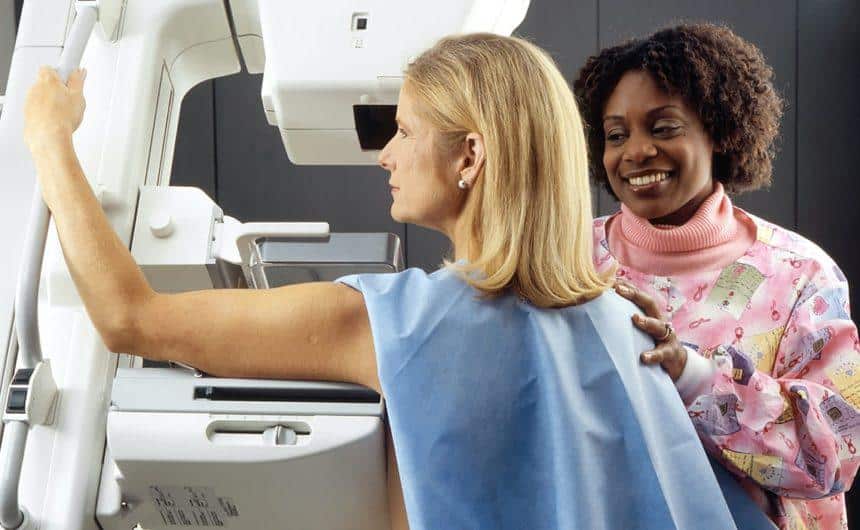Prioritizing Your Annual Mammogram
Women who prioritize annual mammograms starting at the age of 40 have the greatest chance of catching, treating and surviving breast cancer, a study published this month in the Journal of the American College of Radiology suggests.
Samir B. Patel, MD, of Elkhart General Hospital in Elkhart, Indiana, compared overall stage I to IV mortalities of patients diagnosed with breast cancer between 2010 and 2014 in an effort to discern which national screening guidelines offer women the best odds of overcoming the disease. It’s important to test those recommendations, Patel said, because hundreds of thousands of women are diagnosed with breast cancer each year and different entities recommend different preventive practices.
“Mammography utilization has the greatest impact on reduction in breast cancer deaths, with mortality reduction reported up to 59 percent,” he wrote in JACR. “Breast cancer survival is related to many factors, but stage at diagnosis is a critical determinant, with greater survival at a lower stage at diagnosis.”
Recommendations
The ACR, as well as the Society of Breast Imaging and the National Comprehensive Cancer Network, recommend annual screening mammography for women after they turn 40 years old, Patel said, but the U.S. Preventative Services Task Force, American College of Physicians and American Academy of Family Physicians suggest biennial screening for women between 50 and 74 years of age. The American Cancer Society and American Society of Breast Surgeons strongly recommend screening mammography annually between 45 and 54 years old, at which point women are urged to switch to biennial exams.
“Data from computer models comparing different screening mammography recommendations have shown the greatest mortality reduction with a screening strategy following ACR guidelines versus USPSTF and the most recently updated ACS guidelines,” Patel wrote. “However, these recommendations and studies focus on the estimated mortality reduction from screening mammography and not interval cancer detected with diagnostic mammography.”
For his analysis, Patel focused on both screening and diagnostic mammography, utilizing data from 445 breast cancer cases. Percentages of invasive cancers, stage 0 + I of total cancers and stage I of invasive cancers were calculated in each case from the stage of diagnosis, while five-year estimated overall and invasive mortalities were predicted based on SEER survival data and stage.
Patel said women who took the annual screening route saw a 37.3 percent reduced overall mortality rate compared to the biennial program.
“Based on stage at diagnosis, the greatest mortality reduction is achieved with mammography utilization starting at the age of 40,” Patel wrote. “The results of this study are relevant to individual healthcare providers, medical groups, hospitals, health systems, administrators, policymakers and patients for a greater understanding of the potential impact of following the various national mammography guidelines from a population health perspective, because healthcare is moving toward more transparent, population value-based care.”
Contact Us Today!
Contact Women’s Imaging Specialists in Athens to schedule your next annual mammogram!



